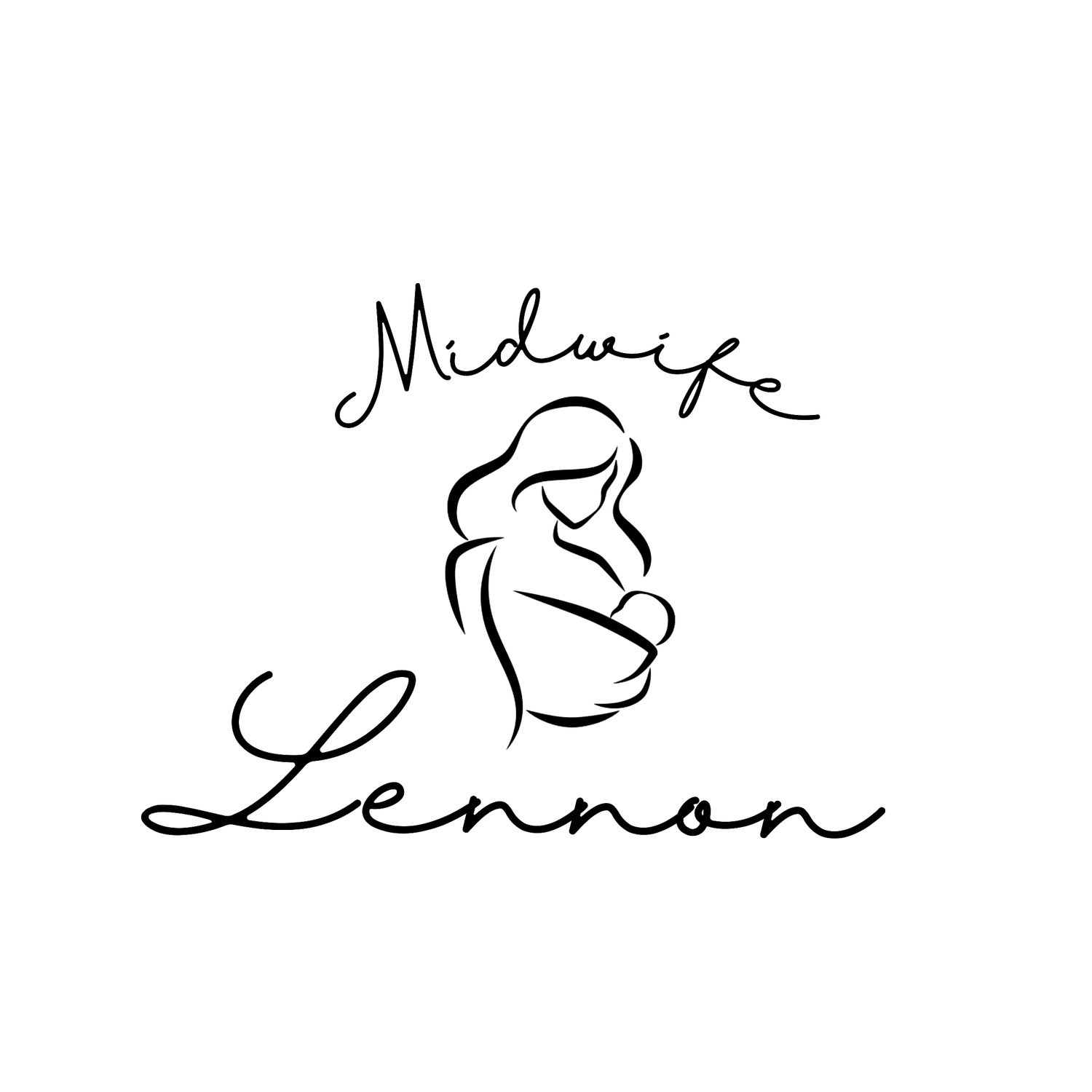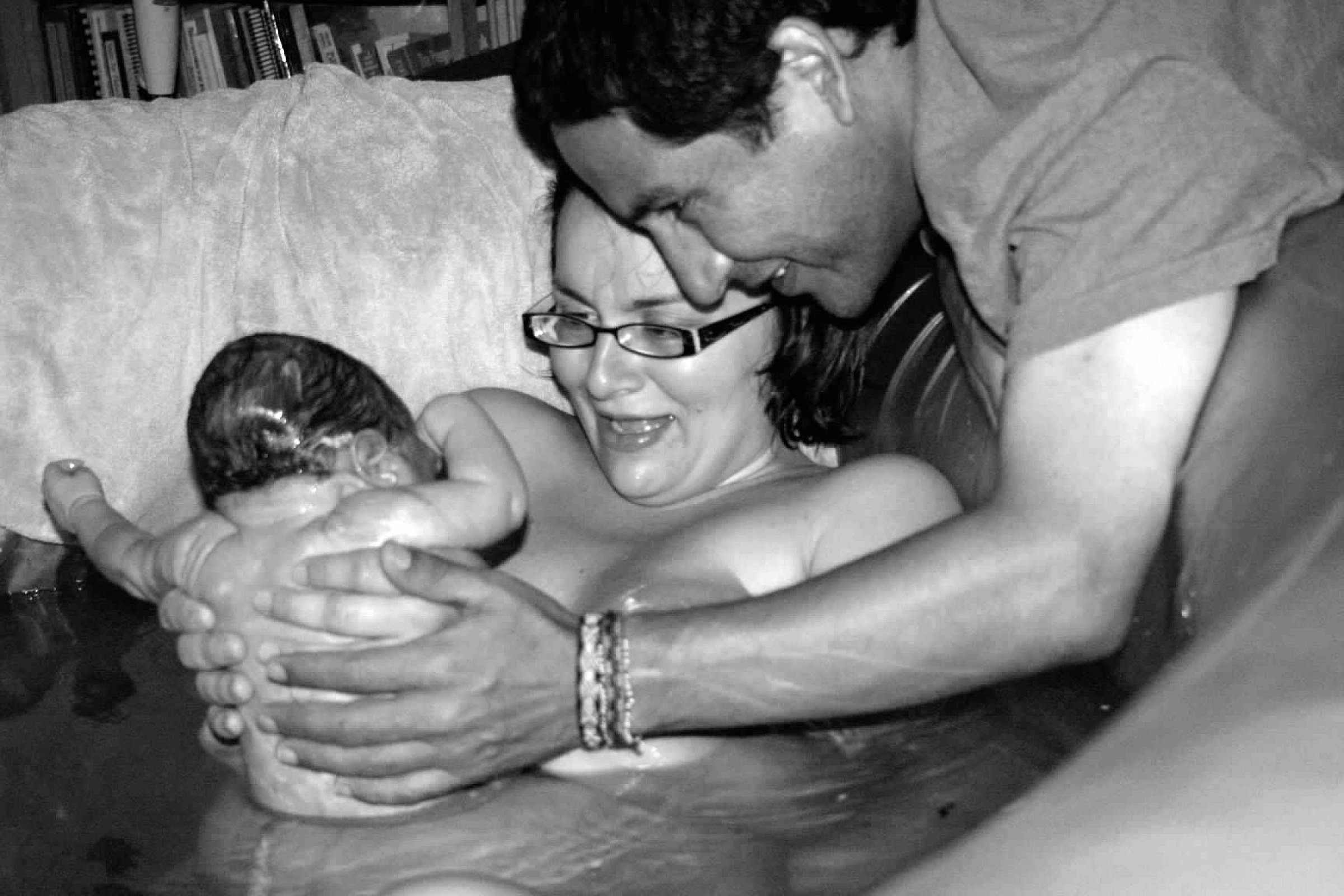The Power of the Fetal Ejection Reflex - No Need to Push Here!
By: Midwife Lennon
The term fetal ejection reflex was first used when a man by the name of Ferguson realized that giving birth is more like a reflex than it is a purposeful action. Of course, we didn’t need science to tell us what 1000’s of years of women could tell you but, this is how it is in the scientific community.
Much like your body beating its own heart or reacting to a hot stove, pushing your baby out, can be involuntary and thoughtless.
Think about it — when you make a baby, you don’t need an instruction manual or someone telling you to breathe at the right time or to move in a certain way. You know what to do.
So, isn’t it common sense that babies would come out in a similar way?
Unfortunately, this is lost wisdom. For the last 100 years, birth has become a mystery. Women go to the hospital, have a baby, and come home with a baby. And all the stuff between is usually a “hush hush” topic.
So now, after 4 generations of industrialized birth, women have forgotten the natural art of getting the baby out in a similar way to how the baby got in — a reflexive, natural event. But in the age of coached pushing and epidurals, it’s easy to see why most women don’t know that the fetal ejection reflex is one of God's most beautiful creations.
How Does the Fetal Ejection Reflex Work –
Do You Have to Practice?
The fetal ejection reflex can only happen when a cocktail of hormones is released during labor which culminates in the baby being expelled from your body. But there are also things you can do to encourage these hormones to released.
Which Hormones are Involved in Pushing?
The most significant hormone involved is oxytocin, known as the love hormone. Oxytocin is involved in sex, labor, birth, and healthy attachment throughout life. Without this burst of oxytocin, seeing or experiencing the fetal ejection reflex is rare.
You can’t make hormones fire, they too are a reflex that comes only with the right environment. Imagine trying to force yourself to attach to a man you don’t love. Or think back on attaching to your mother, you didn’t have to try to do that.
The fetal ejection reflex is rarely seen in the hospital and even in some home births because of lights, interruptions, and interventions. But many midwives and some obstetricians have observed the reflex. While many more women have experienced it but may not have a name for it.
How to Encourage the Fetal Ejection Reflex
The fetal ejection reflex isn’t something that can be practiced. It happens best in a dark, quiet, and undisturbed environment. When you are allowed to move, *not think*, and simply give in to what your body needs to do to birth your baby.
Studies even show that in settings where women aren’t able to relax enough to allow the fetal ejection reflex to occur they switch over to a ‘tend and befriend’ biological response, which then makes the women trust the person of authority present because she is trying to protect herself and her baby.
So instead of giving in to the instinct of birth, she looks to someone else to keep her safe and deliver the baby. This stops the instinct and reflex of birth, which intervention interrupts.
While you may not be able to practice, you can encourage this reflex when you are in an environment that is supported, peaceful, and undisturbed.
What Does the Fetal Ejection Reflex Feel Like?
In most instances, once your cervix is out of the way and you are fully dilated, your body then moves into the “pushing stage”. No one can say how long this will take…
Some women go from 10 cm dilated to a baby in their arms within a few moments while others have a long break before the desire to push comes. And unless your midwife is performing vaginal exams, there is no way to time this period or know when the fetal ejection reflex might kick in.
But if you have ever heard a mom say – or perhaps you’ve experienced – “I didn’t even have to push! The baby flew out” that is the fetal ejection reflex!
Midwives may observe that you change position or make deep guttural sounds calling the midwife from the other room. Then you may experience intense involuntary pushing that quickly and efficiently helps your baby to be born.
At the moment, you likely won’t think “ah this is it! I’m doing the fetal ejection reflex” because at the moment your brain isn’t doing any thinking. Your body takes over and the thousands of years of biology and God-created design deliver your baby.
Even the idea of physiological pushing comes before the true fetal ejection reflex, when you feel increased pressure, and the urge to push, then the fetal ejection reflex expels your baby.
Fetal Ejection Reflex vs Pushing –
Is There a Difference?
No one needs to coach a mother or set a timer to make it happen. So what’s with coached pushing?
We’re told our whole life to resist certain urges or to control certain instincts – when to sleep or what to eat – so most of us don’t listen to our instincts often we’re told we’re wrong if we do, “are you actually hungry right now?”
Then you’re in labor trying to have a baby and your instinct might say “I don’t want to push right now” but the authority in front of you – doctor, nurse, or midwife – is saying “you need to push now” it’s almost impossible to resist the coached pushing.
So, you get on your back, pull your knees to your chest, hold your breath, and puuuuuuuuuuush.
But, it doesn’t have to be this way. If you don’t have to be told when to poop, vomit, or even orgasm, you certainly shouldn’t need to be told when to push your baby out. Our bodies were perfectly designed to do it, whether we like it or not.
But What if You Want Coached Pushing?
Now here comes a caveat… sometimes a mama might ask for coaching. Often this comes after hours of labor and perhaps hours of mother-led pushing. In most cases, this situation happens with first-time mamas, but it is rare in a home birth.
So if you feel like you want coaching or you had coaching through your birth, you did nothing wrong. You asked for the help you needed at the time! I will always follow the lead of the mother and do as she bids. And of course, the fetal ejection reflex is absolutely possible in first time mamas.
More to the Story – Physiological Birth
The fetal ejection reflex, much like other natural reflexes in our body is spontaneous. But there are certainly ways to facilitate an environment that encourages the spontaneous fetal ejection reflex. Yes, women who birth in hospitals and loud environments can experience this reflex BUT it doesn’t always happen.
Some women, who are coached to push never experience the quick and irresistible ejection of their baby. Their pushing efforts slowly but surely deliver the baby but with the spontaneous fetal ejection reflex, the mother’s body does all the work, though I would argue that mother and baby work together.
So how do you create an environment that not only facilitates the fetal ejection reflex but sees it as normal? Enter physiological birth, most safely found in your own home.
Natural Birth at Home With Midwife Lennon –
The Ideal Environment for the Fetal Ejection Reflex
When you’re home, you’re in charge. You choose where you want to labor, what position you want to take up, what sounds you need to make, and who you wish to present. There isn’t any pressure of a timeline (in most situations) and there certainly isn’t the “right way” to have a baby.
Home birth allows you to listen to your instincts that have been quieted for so long. And with a supportive midwife present, she can guide you when you may want it. If you’re looking to harness the power of the fetal ejection reflex, a natural birth at home makes sense.
If you’re curious about how to encourage the fetal ejection reflex in your birth or how to create an environment suitable for a natural birth at home, I’d love to chat. I believe that only a woman can deliver her baby. As a midwife, I trust birth to unfold however it wants to when it is supported and undisturbed.
Send me an email at midwifelennon@gmail.com and I’d be happy to answer any questions you have about natural birth at home and the fetal ejection reflex. Know a mama who might enjoy this blog, send it her way!


